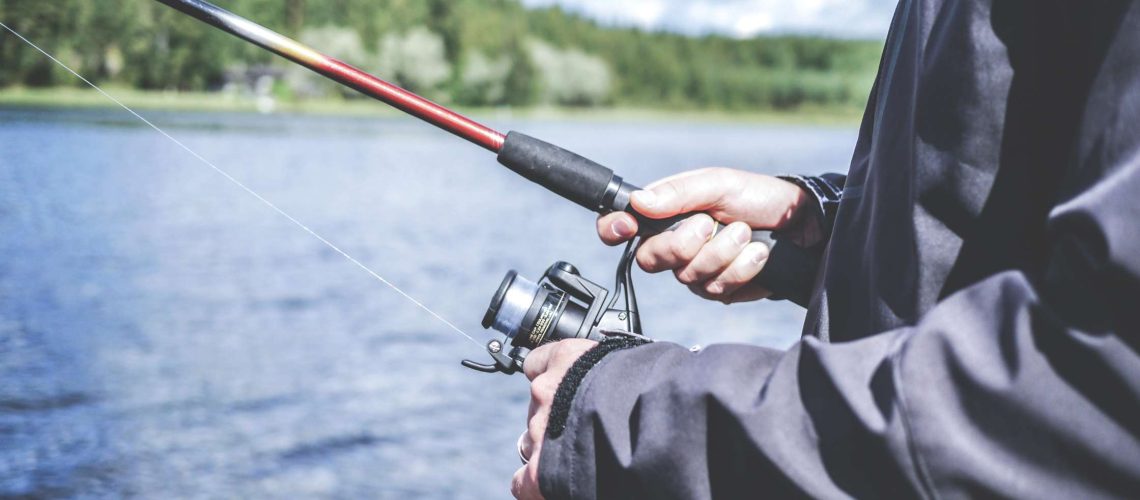Fishing with a spinnerbait is a great way to catch fish in thick cover. But, if you’re not careful, you can easily get your bait stuck in the weeds.
In this article, we’ll explain about using spinnerbaits and how to keep them from getting stuck. We’ll also cover the increased risk of snags with trailer hooks, and how bent metal arms contribute to spinnerbaits getting stuck.
With the right technique and some high-quality spinnerbaits, you’ll be able to get more bites and fewer snags. Let’s get started!
Reasons Your Bait Spinner Lure Keeps Getting Stuck
Are you frustrated with your lures continually getting stuck in vegetation? Learn why it’s happening and how to prevent it.
A spinnerbait’s weedless design usually keeps it from becoming stuck in vegetation. However, improper technique or improper selection of lure size and weight can cause your spinnerbait to snag.
To prevent lures from getting stuck, select the proper size and weight of the lure for the conditions you’re fishing in. Additionally, make sure to keep a consistent speed while retrieving the lure. A slow, steady retrieve will keep your lure out of the vegetation.
Lastly, pay attention to your surroundings and be aware of any changes in vegetation or depth. With a little practice and the proper techniques, you can easily keep your spinnerbait from getting stuck.
The Art of Correctly Retrieving a Spinnerbait Through Cover
Navigating weeds and other cover with a spinnerbait can be tricky, but with a few tricks up your sleeve, you can pull it off without a hitch.
To start, keep the rod tip low and near the surface. This helps reduce the risk of the lure getting snagged on cover.
Make sure to work the spinnerbait on the pause, as this is when the bait can drift into cover and become stuck.
As you make your retrieval, make sure to keep the bait just above the weeds and other cover, so that it doesn’t get caught on anything.
Finally, when you start to feel the lure starting to get stuck, stop your retrieve, pause, and then slowly work the bait back out of the cover.
With patience and practice, you’ll be able to master the art of retrieving spinnerbaits through the weeds and other cover.
How Bent Metal Arms Contribute to Spinnerbaits Getting Stuck
If you’re using spinnerbaits, you need to be aware of how the bent metal arms on them can cause them to get stuck in vegetation! Bent metal arms are designed to allow the spinnerbait to move through water and vegetation, but they can also be a liability if you’re not careful.
Here are three points to keep in mind:
- The bent metal arms can get caught on weeds or other vegetation.
- When the arms get stuck, they can cause the bait to become lodged in the vegetation.
- If the bait is stuck, it can be difficult to free it without breaking the metal arm.
Invest in High-Quality Spinnerbaits for Better Results
Investing in high-quality spinnerbaits such as The Original Prescott Spinner can save you time and frustration. Just like investing in a good pair of hiking boots can help you avoid blisters on the trail.
Since their initial introduction in 1893, these spinners have assisted in the capture of tens of millions of fish spanning nearly every species, establishing their effectiveness across generations. Yellow Bird continues to produce Prescott Spinners, adhering to the original design and the stringent standards set by founder Charles H. Stapf. Their enduring success is a testament to their design and functionality.
Equipped with a red 3/0 eagle claw single hook and available in a wide array of finishes, these spinners offer versatility in fishing approach with models like perch trap, and single or double blade styles. Moreover, Yellow Bird has reintroduced the Prescott Strip-on Spinner, arguably the most lethal rig for trolling or drifting with live or dead minnows. With the invention of live bait rigs, Yellow Bird’s Prescott Spinners are a testament to American-made innovation and remain a top choice for anglers today.

